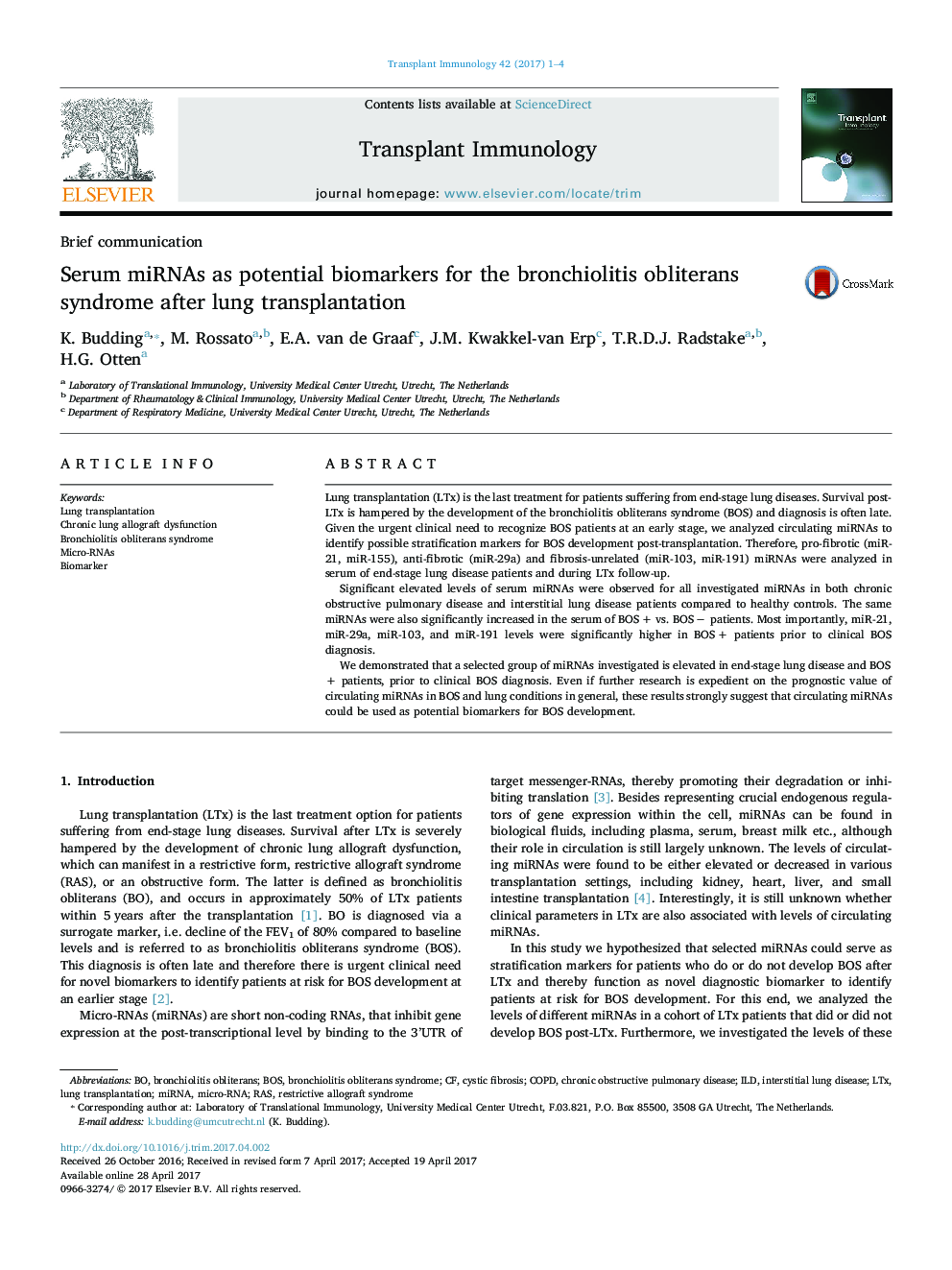| Article ID | Journal | Published Year | Pages | File Type |
|---|---|---|---|---|
| 5670446 | Transplant Immunology | 2017 | 4 Pages |
â¢Selected micro-RNAs are elevated in serum of end-stage lung disease patients.â¢Selected micro-RNAs are elevated in serum of BOS patients post-LTx.â¢Circulatory micro-RNAs could be used as potential biomarkers for BOS development.
Lung transplantation (LTx) is the last treatment for patients suffering from end-stage lung diseases. Survival post-LTx is hampered by the development of the bronchiolitis obliterans syndrome (BOS) and diagnosis is often late. Given the urgent clinical need to recognize BOS patients at an early stage, we analyzed circulating miRNAs to identify possible stratification markers for BOS development post-transplantation. Therefore, pro-fibrotic (miR-21, miR-155), anti-fibrotic (miR-29a) and fibrosis-unrelated (miR-103, miR-191) miRNAs were analyzed in serum of end-stage lung disease patients and during LTx follow-up.Significant elevated levels of serum miRNAs were observed for all investigated miRNAs in both chronic obstructive pulmonary disease and interstitial lung disease patients compared to healthy controls. The same miRNAs were also significantly increased in the serum of BOSÂ + vs. BOSÂ â patients. Most importantly, miR-21, miR-29a, miR-103, and miR-191 levels were significantly higher in BOSÂ + patients prior to clinical BOS diagnosis.We demonstrated that a selected group of miRNAs investigated is elevated in end-stage lung disease and BOSÂ + patients, prior to clinical BOS diagnosis. Even if further research is expedient on the prognostic value of circulating miRNAs in BOS and lung conditions in general, these results strongly suggest that circulating miRNAs could be used as potential biomarkers for BOS development.
